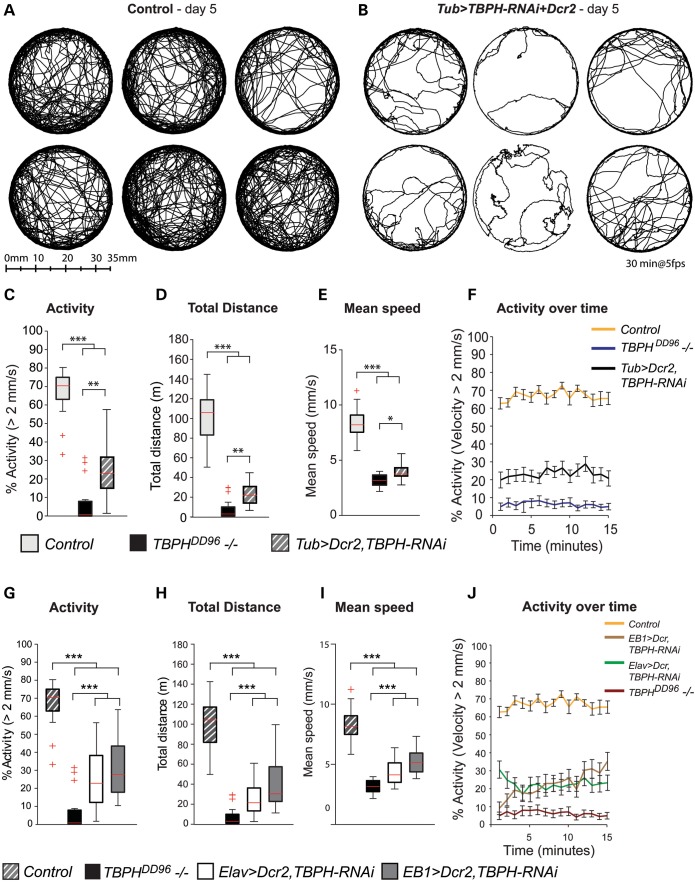Figure 5.
Similar to TBPH mutants, cell-type specific knockdown of TBPH leads to impaired motor behavior. Gal4-mediated UAS-TBPH-RNAi knockdown targeted either ubiquitously (Tub-Gal4) or to all neurons (Elav-Gal4), or targeted to upper motor neurons (EB1-Gal4). RNAi efficiency was enhanced by co-expressing UAS-Dcr2. (A–J) Motor behavior analysis using video assisted open-field motion tracking. (A) Representative walking tracks recorded over 30 min for 5-day-old Tub>Dcr2, TBPH-RNAi flies and heterozygous Dcr2,TBPH-RNAi controls. (C–F) Tracking analyses reveal that, comparable to TBPHDD96−/− mutants, Tub>Dcr2,TBPH-RNAi flies have a significantly reduced average activity, total distance travelled, mean speed and activity over time when compared with heterozygous Dcr2,TBPH-RNAi controls. (G–J) Dcr2, TBPH-RNAi expression was activated by either the pan-neuronal ELAV-Gal4 driver, or the EB1-Gal4 driver (ELAV>Dcr2,TBPH-RNAi or EB1>Dcr2,TBPH-RNAi, respectively). Tracking analyses reveal that, comparable to TBPHDD96−/− mutants, the walking activity, total distance travelled, mean speed and activity over time of 5-day-old ELAV>Dcr2,TBPH-RNAi and EB1>Dcr2,TBPH-RNAi flies is significantly reduced when compared with that of the control (heterozygous Dcr2,TBPH-RNAi). Box-plots show median, upper and lower quartiles (box); whiskers contain data 1.5× the interquartile range; +indicates a data point within 3× the interquartile range (outliers). (n = 24; *P < 0.05, **P < 0.01, ***P < 0.001). Mean and SEM are shown (F, J).

